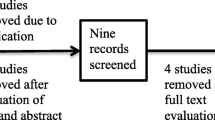Abstract
TB is a worldwide pandemic. India has the highest burden of TB, with WHO statistics for 2013 giving an estimated incidence figure of 2.1 million cases for India out of a global incidence of 9 million. Microbiota have been shown to be associated with many disease conditions; however, only few studies have been reported for microbiota associated with TB infection. For the first time, we characterized the composition of microbiota of TB patients of India, using high-throughput 16S rRNA gene sequencing and compared it with healthy controls. Phylum-level analysis showed that the relative abundance of Firmicutes and Actinobacteria was significantly higher in TB samples and Neisseria and Veillonella were two dominant genera after Streptococcus. In our study, significantly different core genera in TB and normal population were found as compared with the reported studies. Also, the presence of diverse opportunistic pathogenic microbiota in TB patients increases the complexity and diversity of sputum microbiota. Characterization of the sputum microbiome is likely to provide important pathogenic insights into pulmonary tuberculosis.



Similar content being viewed by others
References
WHO (2014) Global tuberculosis report 2014. World Health Organuisation, Geneva
Zhou Y, Lin P, Li Q, Han L, Zheng H, Wei Y, Cui Z, Ni Y, Guo X (2010) Analysis of the microbiota of sputum samples from patients with lower respiratory tract infections. Acta Biochim Biophys Sin Shanghai 42(10):754–761
Pedron T, Sansonetti P (2008) Commensals bacterial pathogens and intestinal inflammation: an intriguing menage a trois. Cell Host Microbe 3:344–347
Bisen PS (2015) Potential of microbiome research in respiratory diseases. J Respir Res 1(1):13–14
Zacharia AJ, Jain A, Raghuvanshi R, Kumar A, Prasad GBKS, Bisen PS (2016) Gas chromatography and mass spectroscopy based detection of autoinducer-2 like molecule in the circulation of tuberculosis infected cases. J Respir Res 2(1):33–36
Blaser MJ, Falkow S (2009) What are the consequences of the disappearing human microbiota? Nat Rev Microbiol 7(12):887–894
Costello EK, Lauber CL, Hamady M, Fierer N, Gordon JI et al (2009) Bacterial community variation in human body habitats across space and time. Science 326:1694–1697
The Human Microbiome Project Consortium (2012) Structure, function and diversity of the healthy human microbiome. Nature 486:207–214
Ling Z, Kong J, Liu F, Zhu H, Chen X et al (2010) Molecular analysis of the diversity of vaginal microbiota associated with bacterial vaginosis. BMC Genomics 11:488
Charlson ES, Bittinger K, Chen J, Diamond JM, Li H et al (2012) Assessing bacterial populations in the lung by replicate analysis of samples from the upper and lower respiratory tracts. Plos One 7, e42786
Lazarevic V, Whiteson K, Huse S, Hernandez D, Farinelli L et al (2009) Metagenomic study of the oral microbiota by Illumina high-throughput sequencing. J Microbiol Methods 79:266–271
Erb-Downward JR, Thompson DL, Han MK, Freeman CM, McCloskey L et al (2011) Analysis of the lung microbiome in the “healthy” smoker and in COPD. Plos One 6, e16384
Cui Z, Zhou Y, Li H, Zhang Y, Zhang S et al (2012) Complex sputum microbial composition in patients with pulmonary tuberculosis. BMC Microbiol 12:276
Cheung MK, Lam WY, Fung WY, Law PT, Au CH et al (2013) Sputum microbiota in tuberculosis as revealed by 16S rRNA pyrosequencing. Plos One 8, e54574
Wu J, Liu W, He L, Huang F, Chen J, Cui P et al (2013) Sputum microbiota associated with new, recurrent and treatment failure tuberculosis. Plos One 8(12), e83445
Bhat J, Rao VG, Yadav R, Muniyandi M, Sharma R, Karfarma C, Luke C (2015) Situation of drug resistant tuberculosis in Saharia tribe of central India. Indian J Med Res 141(5):636–639
Cabrera-Rubio R, Garcia-Núñez M, Setó L, Antó JM, Moya A et al (2012) Microbiome diversity in the bronchial tract of patients with chronic obstructive pulmonary disease. J Clin Microbiol 50:3562–3568
Coburn B, Wang PW, Diaz Caballero J, Clark ST, Brahma V et al (2015) Lung microbiota across age and disease stage in cystic fibrosis. Sci Rep 5:10241
Fusconi M, Conti C, de Virgilio A, Vincentiis M (2009) Polmonite paucisintomatica da Rothia mucilaginosa: caso clinica e rassegna della letteratura. Infez Med 2:100–104
Baeza Martínez C, Zamora Molina L, García Sevila R, Gil Carbonell J, Ramos Rincon JM, Martín Serrano C (2014) Rothia mucilaginosa pneumonia in an immunocompetent patient. Arch Bronconeumol 50(11):493–495
Loughrey AC, Chew EW (1990) Endocarditis caused by Veillonella dispar. J Infect 21:319–321
Houston SD, Taylor D, Rennie R (1997) Prosthetic valve endocarditis due to Veillonella dispar: successful medical treatment following penicillin desensitization. Clin Infect Dis 24:1013–1014
Fisher K, Phillips C (2009) The ecology, epidemiology and virulence of Enterococcus. Microbiology 155:1749–1757
Parameswaran G, Wrona CT, Murphy TF, Sethi S (2009) Moraxella catarrhalis acquisition, airway inflammation and protease-antiprotease balance in chronic obstructive pulmonary disease. BMC Infect Dis 9:178
Acknowledgments
We are grateful to Grand Challenges Canada (ID S4 0253-01) for providing financial assistance to support this study, to Dr. Anish Zacharia J, Sun Pharmaceutical Industries Limited, India for collection of samples from Gajra Raja Medical College, Gwalior, India, and to Devashish Ohri, Executive Vice President-APAC and Shyam Sharma, Vice President-Diagnostics APAC, Avantor Performance Materials India Limited for their support and providing infrastructure. Bioinformatics support was provided by 1st BASE Laboratories, Singapore.
Author information
Authors and Affiliations
Corresponding author
Ethics declarations
Funding
Grand Challenges Canada, Grant ID S4 0253-01.
Conflict of interest
The authors declare that there is no conflict of interest.
Ethical approval
All procedures performed in studies involving human participants were in accordance with the ethical standards of the institutional research committee and with the 1964 Helsinki Declaration and its later amendments or comparable ethical standards.
Informed consent
Written consent was obtained from all the studied patients for sample collection and subsequent analysis.
Additional information
Pankaj Krishna and Anubhav Jain contributed equally as first author.
Rights and permissions
About this article
Cite this article
Krishna, P., Jain, A. & Bisen, P.S. Microbiome diversity in the sputum of patients with pulmonary tuberculosis. Eur J Clin Microbiol Infect Dis 35, 1205–1210 (2016). https://doi.org/10.1007/s10096-016-2654-4
Received:
Accepted:
Published:
Issue Date:
DOI: https://doi.org/10.1007/s10096-016-2654-4




